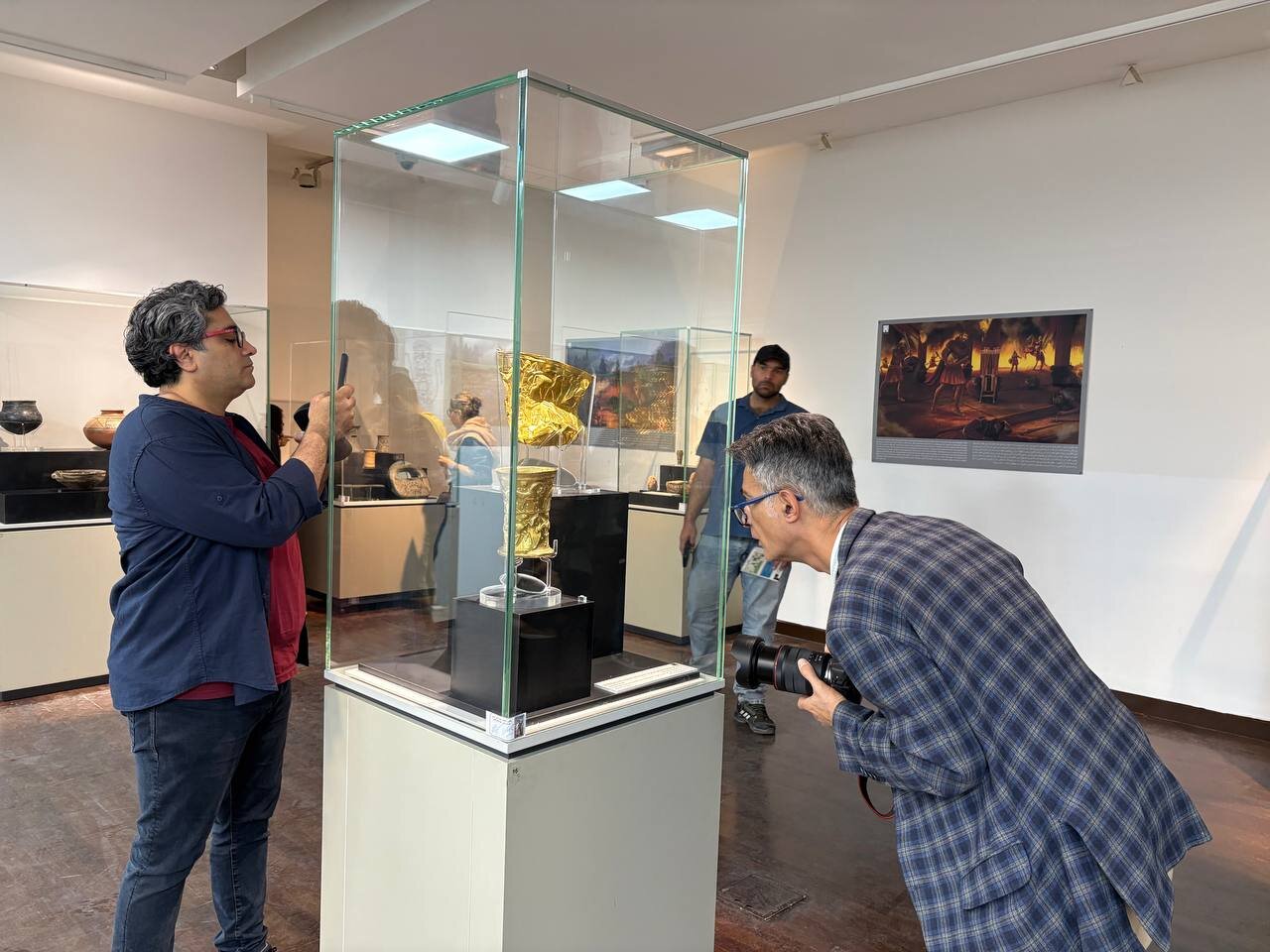‘Narrators of Ancient Iran’ extended after popular demand

TEHRAN - Due to “its great success”, the exhibition “Narrators of Ancient Iran: A Selection of Objects from the National Museum” has been extended for one month and will now remain open to the public until December 21.
As mentioned by organizers, the “comprehensive” exhibition offers a sweeping overview of Iranian history, featuring more than 330 objects excavated from nearly 80 different sites. It presents a unique collection that includes less-seen items from the National Museum’s repository, combined with objects from the Museum of Ancient Iran and the Museum of Islamic Archaeology and Art, as well as artifacts that were previously featured in the “Glory of Ancient Persia” exhibitions held in China.
The exhibit is organized into three main galleries tracing Iran’s history. The first one is dedicated to Iran’s prehistory, specifically the Paleolithic, Neolithic, and Chalcolithic periods. Important sites from which objects are displayed include Wezmeh Cave, Abdul Hosein, and Sang-e Chakhmaq. The Director General added: “Visitors can see the bone flute from Sang-e Chakhmaq, which is currently the oldest known musical instrument in Iran.”
The second gallery is dedicated to the Bronze and Iron Ages, Elamite, Achaemenid, Seleucid, Parthian, and Sasanian periods.” Notable works in this gallery include Bronze Age artifacts from Shahr-e Sukhteh, Shahdad, and Jiroft in southeastern Iran. From the Iron Age, prominent works from sites such as Marlik, Hasanlu, Qalaichi, and Lorestan are displayed, including the golden bowls of Hasanlu and Marlik, which are among the prominent artistic works of this period in the National Museum of Iran. Artifacts from the Elamite and Median civilizations are other features of this gallery.

The third gallery of the exhibition is dedicated to artifacts from the Islamic era in Iran. This gallery consists of two sections, displaying a selection of Iran’s rich heritage from the Islamic period in the fields of calligraphy, metalworking, and the textile. The first section of this gallery contains outstanding works from the early centuries to the Qajar period, including a Quran written in Muhaqqaq script from the Ilkhanid period dated 704 AH (1305 CE), the manuscript of “Masalik va Mamalik,” Ilkhanid mihrab tiles, an astrolabe, and a celestial globe from the Seljuk period.
According to organizers, the second section of the third gallery also displays exquisite Safavid-era textiles, showcasing a brilliant example of Iranian textile art. It features works such as silk brocade (Zarbaft) with delicate Gol-o-Morgh (flower and bird) patterns, satin fabrics with golden backgrounds, and brocaded borders (Zari), all woven in the workshops of Isfahan, the art-loving capital of the Safavids. These precious textiles, created with astonishing delicacy using silk and golden threads, bear witness to the splendor and artistic taste of the Safavid court and textile industry.
For those planning a visit, the prestigious exhibition is open Saturday through Wednesday from 9:00 in the morning until 5:00 in the evening. On Thursdays and Fridays, the hours are extended, with the exhibition remaining open until 6:00 PM.
AM
